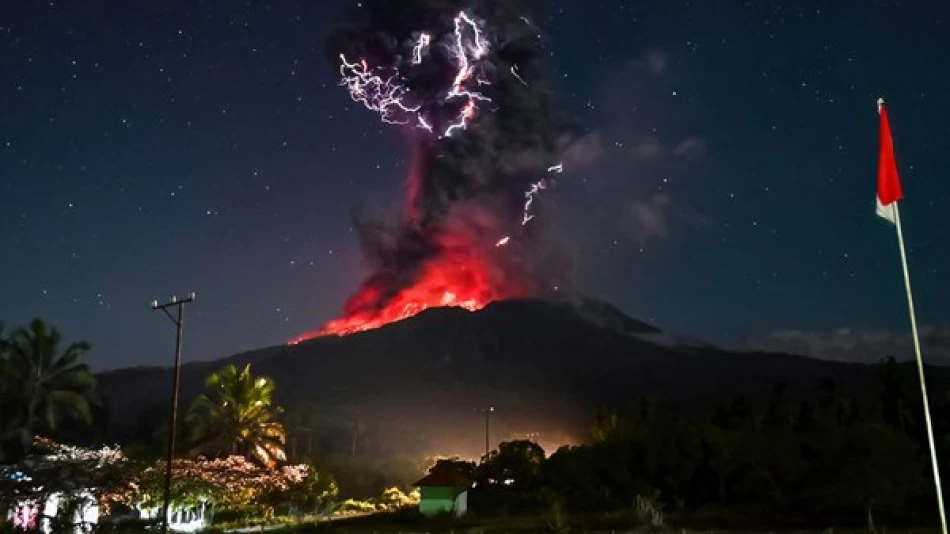
Massive Smoke Column Erupts from Indonesian Volcano, Drawing Global Attention
Indonesia's Mount Lewotobi Erupts with 10-Kilometer Ash Column, Triggering Mass Evacuations
Mount Lewotobi Laki-laki on Indonesia's Flores Island erupted early Friday morning, sending a massive ash column 10 kilometers into the sky and forcing authorities to establish a 7-kilometer danger zone. The eruption, accompanied by thunderous sounds, highlights Indonesia's ongoing struggle with volcanic activity along the Pacific Ring of Fire, potentially disrupting regional air travel and local tourism economies.
Eruption Details and Immediate Response
The Indonesian Geological Agency reported that Mount Lewotobi Laki-laki erupted at 8:48 AM local time (0048 GMT) on Flores Island in East Nusa Tenggara province. Monitoring stations near the volcano recorded not only the towering ash column but also powerful rumbling sounds that accompanied the eruption.
Authorities have implemented a comprehensive evacuation zone, warning residents and tourists to avoid all activities within 6 kilometers of the crater. The danger zone extends to 7 kilometers in sectors stretching from the southwest to the northeast, indicating the directional nature of the volcanic threat based on prevailing wind patterns and topography.
Regional Context: Indonesia's Volcanic Volatility
This eruption adds to Indonesia's reputation as one of the world's most volcanically active nations, sitting atop the Pacific Ring of Fire with over 130 active volcanoes. Mount Lewotobi's activity follows a pattern of increased volcanic unrest across the Indonesian archipelago in recent years, including significant eruptions at Mount Merapi in Java and Mount Sinabung in Sumatra.
Flores Island, located in the eastern part of Indonesia, hosts several active volcanic systems. The region's volcanic activity stems from the complex tectonic interactions between the Indo-Australian and Eurasian plates, making eruptions both frequent and potentially severe.
Economic and Tourism Implications
The eruption poses immediate challenges for Indonesia's tourism sector, particularly in East Nusa Tenggara province, which has been developing as an alternative destination to overcrowded Bali. Flores Island attracts visitors primarily for its proximity to Komodo National Park and its unique volcanic landscapes.
Air travel disruptions are likely, as volcanic ash poses significant risks to aircraft engines. Airlines operating in the region will need to monitor ash cloud movements carefully, potentially leading to flight cancellations or rerouting that could affect thousands of passengers.
Preparedness and Risk Management
Indonesia's response demonstrates the country's improved volcanic monitoring capabilities developed after devastating eruptions in previous decades. The quick establishment of exclusion zones and real-time monitoring reflects lessons learned from past disasters, including the 2018 Anak Krakatau tsunami and various eruptions that have claimed thousands of lives.
The 7-kilometer extended danger zone in specific sectors shows sophisticated hazard mapping, taking into account factors like pyroclastic flow patterns and prevailing winds. This targeted approach allows authorities to maximize safety while minimizing unnecessary displacement of local populations.
Local communities in volcanic regions of Indonesia have developed resilience strategies over generations, but modern eruptions require coordinated responses involving geological monitoring, emergency services, and economic support systems for affected populations.
Most Viewed News

 Layla Al Mansoori
Layla Al Mansoori






